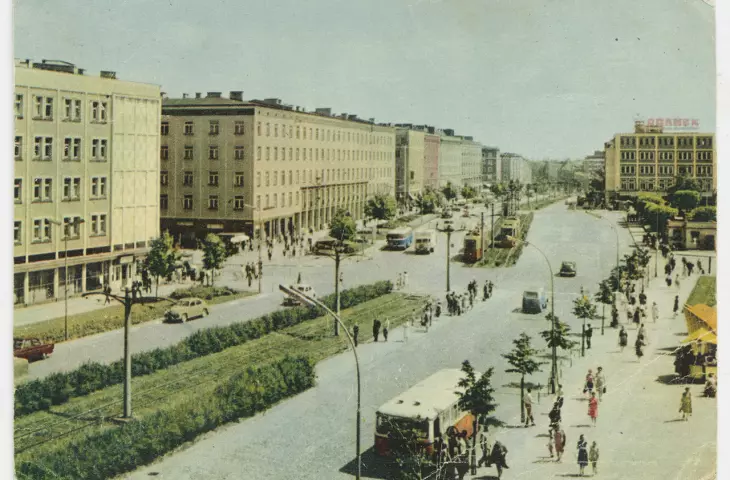Although Socialist Realism is mainly associated with Warsaw's Palace of Culture, the Marszałkowska Housing District and Kraków's Nowa Huta, Gdansk also had a vision of building a vast complex with monumental buildings. The exhibition "Grunwaldzka Dzielnica Mieszkaniowa" at the Gdansk Museum tells about the details, the concepts realized in Wrzeszcz, but also those that could not be implemented.
Thedecision to build the Grunwaldzka Dzielnica Mieszkaniowa was made in the 1950s. At the time, 69,000 people, or as many as one-third of the population of Gdansk, lived in Wrzeszcz, which did not suffer as severely as the center of Gdansk in the war. Grunwald Avenue, which was called Adolf-Hitler-Straße until May 1, 1945, suffered the most damage during the war, along with the adjacent old market square and surrounding houses.
A new center of commerce and services for the rebuilding city
In 1946, a decision was made to connect Gdansk and Gdynia by a wide road, of which the main street of Wrzeszcz was to become a section. Work began in 1947, and the wide Grunwald Avenue is to this day the main traffic axis of the Tricity. New buildings began to be erected along it, including the Book House on the corner of Miszewskiego Street, and the Merchant House began to be built at the exit of Jaskowa Dolina Street. Wrzeszcz, just after the center of Gdansk and Gdynia, was to become another commercial and service district.
We associate Socialist Realism with Warsaw's Palace of Culture, the Marszałkowska Housing District and Kraków's Nowa Huta. In Gdansk, too, there was to be a vast establishment with monumental buildings. The Grunwaldzka Dzielnica Mieszkaniowa was to occupy the central part of Wrzeszcz and become a new service and commercial center for the city rising from ruins , says Waldemar Ossowski, director of the Gdansk Museum.
The urban design of the Grunwald Residential District was entrusted to Vilnius architect Irena Heilmanova.
It was she who gave the central part of the district a metropolitan character. Subsequently, the detailed plan was developed by architect Waclaw Rembiszewski together with Jozef Chmiel and Wladyslaw Lew. This, in turn, made possible the establishment of the Grunwald Residential District by the City National Council in 1950 , says Klaudiusz Grabowski of the Gdansk Museum, curator of the exhibition.
He adds that the GDM project was important for socialist propaganda, as it became part of the Six-Year Plan, which was implemented between 1950 and 1955.
GDM graphic
© Museum of Gdansk
idea of sloping roofs burned to the ground
Daniel Olędzki was responsible for designing the GDM between 1953 and 1963. The original concept was to refer to the historic tenements of Gdansk, so three-story houses with sloping roofs were to be built, but a delegation from Warsaw came... and as a result, in the district the buildings are four stories high, without sloping roofs. Just like in the capital ," explains Grabowski.
Some of the urban planning assumptions - have been realized. Despite some restrictions, numerous cafes, stores and restaurants were built in the GDM area, the most famous of which were Cristal and Olympus, located on top of a 17-story skyscraper popularly known as "Dolarowiec," which was built in 1969 already in modern forms.
Construction of the Punktowce between Lendziona and Klonowa Streets, 1959-1960
© National Digital Archive
The temporary exhibition takes a closer look at the backstage of the creation of the GDM, the ideas that were implemented to ensure the comfort of the residents, as well as the concepts that were not put into practice (such as the construction of Grunwaldzki Square, along the arterial street, or a community center with a library and theater). In the Court Room of the Fore Gate Complex, viewers will see archival photographs from the 1950s, 1960s, including unique photos of mock-ups with unrealized concepts, and a 1954 plan of the GDM given by the wife of the chief designer, architect Danuta Oledzka.
Grunwaldzka Dzielnica Mieszkaniowa exhibition
photo: A. Grabowska




























